 The US Court of Appeals ruled that many of Trump’s tariffs are illegal, but Treasury Secretary Bessent expects the Supreme Court to rule otherwise (and he has a backup plan if it doesn’t). In related news: Bessent said Trump may declare a national housing emergency this fall to tackle affordability; lumber futures fell to a four-month low; and US consumer sentiment fell 6% in August. In other Business news: San Group’s credit-protection process requires more time; UK’s Kingspan Timber is closing after 60 years; and wildfires are hurting tourism in Alberta, Saskatchewan and Manitoba.
The US Court of Appeals ruled that many of Trump’s tariffs are illegal, but Treasury Secretary Bessent expects the Supreme Court to rule otherwise (and he has a backup plan if it doesn’t). In related news: Bessent said Trump may declare a national housing emergency this fall to tackle affordability; lumber futures fell to a four-month low; and US consumer sentiment fell 6% in August. In other Business news: San Group’s credit-protection process requires more time; UK’s Kingspan Timber is closing after 60 years; and wildfires are hurting tourism in Alberta, Saskatchewan and Manitoba.
In Forestry/Wildfire news: Ottawa is just over a 10th of the way to is 2 billion tree planting goal; debate continues over proposed changes to the US Roadless Rule; misinformation helped kill Oregon’s wildfire risk map; ENGOs call for an end to native logging in New South Wales, Australia; and wildfire updates from Saskatchewan and Oregon.
Finally, the history and future direction of wood science, and Portland’s proposed mass-timber research and manufacturing campus.
Kelly McCloskey, Tree Frog Editor

 BURNABY, BC — Interfor Corporation announced plans to reduce its lumber production by approximately 145 million board feet between September and December of 2025, representing approximately 12% of its normal operating stance. The temporary curtailments will be through a combination of reduced operating hours, prolonged holiday breaks, reconfigured shifting schedules and extended maintenance shut-downs. The curtailments are expected to impact all of Interfor’s operating regions, with both the Canadian and US operations expected to reduce their production levels by approximately 12% each. The curtailments are in response to persistently weak market conditions and ongoing economic uncertainty. The Company will continue to monitor market conditions across all of its operations and adjust its production plans accordingly. [END]
BURNABY, BC — Interfor Corporation announced plans to reduce its lumber production by approximately 145 million board feet between September and December of 2025, representing approximately 12% of its normal operating stance. The temporary curtailments will be through a combination of reduced operating hours, prolonged holiday breaks, reconfigured shifting schedules and extended maintenance shut-downs. The curtailments are expected to impact all of Interfor’s operating regions, with both the Canadian and US operations expected to reduce their production levels by approximately 12% each. The curtailments are in response to persistently weak market conditions and ongoing economic uncertainty. The Company will continue to monitor market conditions across all of its operations and adjust its production plans accordingly. [END]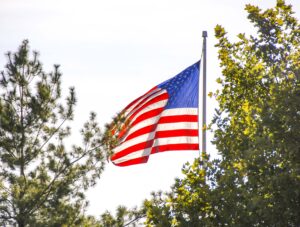 WASHINGTON — US President Trump is indicating that he’ll ask the Supreme Court tomorrow to overturn a federal appeals court ruling that found many of his
WASHINGTON — US President Trump is indicating that he’ll ask the Supreme Court tomorrow to overturn a federal appeals court ruling that found many of his 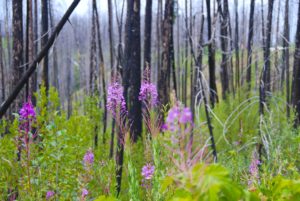 CALGARY — Fewer tourists are coming to Jasper, Alberta than usual this year, but it’s not for a lack of people eager to visit the picturesque Rocky Mountain town. Numbers are about as good as they can be, considering about one-fifth of the town’s overnight accommodations burned when a ferocious wildfire swept through last summer, said Tourism Jasper CEO Tyler Riopel. …As the Jasper recovery continues, tourism operators affected by wildfires elsewhere this year are struggling. Northern Saskatchewan and Manitoba have been particularly hard hit, which has taken a toll on outfitting businesses that cater to hunters and fishers. Roy Anderson, acting CEO of the Saskatchewan Commission of Professional Outfitters, said his group is surveying members to quantify the financial impact. “We’re talking millions of dollars in terms of lost revenue at a minimum,” he said.
CALGARY — Fewer tourists are coming to Jasper, Alberta than usual this year, but it’s not for a lack of people eager to visit the picturesque Rocky Mountain town. Numbers are about as good as they can be, considering about one-fifth of the town’s overnight accommodations burned when a ferocious wildfire swept through last summer, said Tourism Jasper CEO Tyler Riopel. …As the Jasper recovery continues, tourism operators affected by wildfires elsewhere this year are struggling. Northern Saskatchewan and Manitoba have been particularly hard hit, which has taken a toll on outfitting businesses that cater to hunters and fishers. Roy Anderson, acting CEO of the Saskatchewan Commission of Professional Outfitters, said his group is surveying members to quantify the financial impact. “We’re talking millions of dollars in terms of lost revenue at a minimum,” he said.
 MANIWAKI, Quebec — The Domtar sawmill in Maniwaki, Quebec, will temporarily close again next month. The company, which acquired the mill when it bought Resolute Forest Products in 2023, confirmed Wednesday to Radio-Canada that the indefinite closure will begin Oct. 10. It cited difficult market conditions and US softwood lumber duties, which rose to more than 35 per cent last month. About 120 workers at the mill lost their jobs in a previous closure that started in December 2024. The mill reopened for about 50 hours a week at the start of June. About 3,800 people lived in the western Quebec community as of the 2021 census. [END]
MANIWAKI, Quebec — The Domtar sawmill in Maniwaki, Quebec, will temporarily close again next month. The company, which acquired the mill when it bought Resolute Forest Products in 2023, confirmed Wednesday to Radio-Canada that the indefinite closure will begin Oct. 10. It cited difficult market conditions and US softwood lumber duties, which rose to more than 35 per cent last month. About 120 workers at the mill lost their jobs in a previous closure that started in December 2024. The mill reopened for about 50 hours a week at the start of June. About 3,800 people lived in the western Quebec community as of the 2021 census. [END]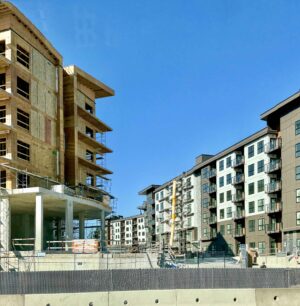 Treasury Secretary Scott Bessent said the Trump administration may declare a national housing emergency this fall as the White House looks to highlight key issues for midterm campaign voters. …Bessent said housing affordability would be a critical leg of Republicans’ 2026 midterm election platform. Bessent declined to list any specific actions the president may take, but he suggested that administration officials are directly studying ways to standardize local building and zoning codes and decrease closing costs. President Trump has repeatedly used emergency declarations to avoid having to send legislation to Congress for approval. Some of those, particularly the emergency law he cited to institute his tariff regime, have faced pushback in federal court. …Trump also spoke out on the issue during the campaign and said he wants to open up federal land for housing development and pledged to help with affordability by eliminating regulations.
Treasury Secretary Scott Bessent said the Trump administration may declare a national housing emergency this fall as the White House looks to highlight key issues for midterm campaign voters. …Bessent said housing affordability would be a critical leg of Republicans’ 2026 midterm election platform. Bessent declined to list any specific actions the president may take, but he suggested that administration officials are directly studying ways to standardize local building and zoning codes and decrease closing costs. President Trump has repeatedly used emergency declarations to avoid having to send legislation to Congress for approval. Some of those, particularly the emergency law he cited to institute his tariff regime, have faced pushback in federal court. …Trump also spoke out on the issue during the campaign and said he wants to open up federal land for housing development and pledged to help with affordability by eliminating regulations.




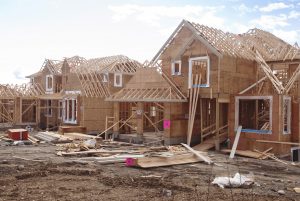 Lumber futures fell again Wednesday, dropping to their lowest prices since last autumn. …Futures for September delivery shed $6 or about 1.1%, to end at $524 per thousand board feet. Futures have now declined 18 of the past 22 trading sessions. The selloff—about 25% over the past month—is reminiscent of the wild trading in lumber during the Covid-19 pandemic [but this time] …the continuing gyrations have been driven by trade policy. Lumber buyers stocked up ahead of a big increase in the duties levied on Canadian imports. …President Trump’s threats for additional tariffs on imported wood added incentive to hoard lumber. …The $54 difference in price between lumber futures for delivery this month and those for November in midday trading was well above the cost of warehousing wood for two months and a sign that traders’ demand outlook is bleak, Stinson Dean said. [to access the full story a WSJ subscription is required]
Lumber futures fell again Wednesday, dropping to their lowest prices since last autumn. …Futures for September delivery shed $6 or about 1.1%, to end at $524 per thousand board feet. Futures have now declined 18 of the past 22 trading sessions. The selloff—about 25% over the past month—is reminiscent of the wild trading in lumber during the Covid-19 pandemic [but this time] …the continuing gyrations have been driven by trade policy. Lumber buyers stocked up ahead of a big increase in the duties levied on Canadian imports. …President Trump’s threats for additional tariffs on imported wood added incentive to hoard lumber. …The $54 difference in price between lumber futures for delivery this month and those for November in midday trading was well above the cost of warehousing wood for two months and a sign that traders’ demand outlook is bleak, Stinson Dean said. [to access the full story a WSJ subscription is required]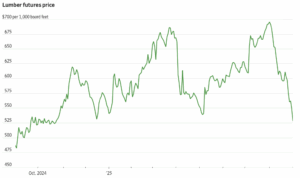 Lumber prices, which shed more than 20% in August, have continued to fall to start September, hitting their lowest price this year thanks to a glut of wood that was piled up ahead of a big increase in duties on Canadian imports. “There has clearly been a speculative inventory accumulation at every level from mills to single location lumber dealers,” said Matt Layman, who publishes Layman’s Lumber Guide “For the first time in my 40-plus year career there is indeed a wall of wood that must be liquidated.” As with many raw materials, the lumber market has been whipsawed by President Trump’s tariff threats. The White House is studying tariffs on imported lumber in the name of national security. …Any lumber tariff will come on top of duties on Canadian softwood lumber that rose to about 35% for most producers, from 15% last year. [to access the full story a WSJ subscription is required]
Lumber prices, which shed more than 20% in August, have continued to fall to start September, hitting their lowest price this year thanks to a glut of wood that was piled up ahead of a big increase in duties on Canadian imports. “There has clearly been a speculative inventory accumulation at every level from mills to single location lumber dealers,” said Matt Layman, who publishes Layman’s Lumber Guide “For the first time in my 40-plus year career there is indeed a wall of wood that must be liquidated.” As with many raw materials, the lumber market has been whipsawed by President Trump’s tariff threats. The White House is studying tariffs on imported lumber in the name of national security. …Any lumber tariff will come on top of duties on Canadian softwood lumber that rose to about 35% for most producers, from 15% last year. [to access the full story a WSJ subscription is required]

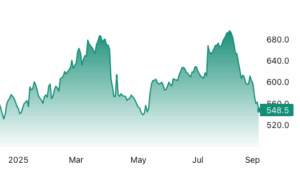 Lumber futures fell to $550 per thousand board feet in September, the lowest in nearly four months, amid softer demand for new home building and ample supply. US building permits fell 2.2% in July to a seasonally adjusted annualized rate of 1.362 million, the lowest since June 2020. Although the market anticipates a potential rate cut in September, rates are expected to remain restrictive, and high inflation expectations are expected to support long-maturity yields, which dictate mortgage costs. Seasonal slowdown in construction is set to magnify the drop in housing construction. On the supply side, Canadian mills continue to push large volumes of surplus lumber into the US market, far exceeding actual demand and creating an oversupply situation. Additionally, ongoing tariff issues between the US and Canada add further uncertainty, as potential changes in trade policy could significantly affect US lumber prices.›
Lumber futures fell to $550 per thousand board feet in September, the lowest in nearly four months, amid softer demand for new home building and ample supply. US building permits fell 2.2% in July to a seasonally adjusted annualized rate of 1.362 million, the lowest since June 2020. Although the market anticipates a potential rate cut in September, rates are expected to remain restrictive, and high inflation expectations are expected to support long-maturity yields, which dictate mortgage costs. Seasonal slowdown in construction is set to magnify the drop in housing construction. On the supply side, Canadian mills continue to push large volumes of surplus lumber into the US market, far exceeding actual demand and creating an oversupply situation. Additionally, ongoing tariff issues between the US and Canada add further uncertainty, as potential changes in trade policy could significantly affect US lumber prices.›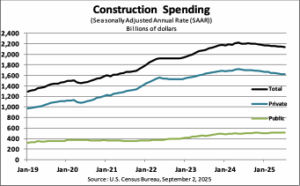 Construction spending in the United States reached $1,232.7 billion during the first seven months of 2025, a 2.2% decrease from $1,259.9 billion in the same period of 2024. Residential construction accounted for $524.7 billion, down 4.0%, while nonresidential construction declined 0.8% to $707.9 billion, according to the U.S. Census Bureau. Private construction dropped 3.8% year-to-date to $946.5 billion. …Public construction increased 3.8% to $286.2 billion over the same period. …For the month of July 2025, construction spending was at a seasonally adjusted annual rate of $2,139.1 billion, down 0.1% from June and 2.8% below July 2024. Private sector construction decreased 0.2% from the previous month, while public construction rose 0.3%.
Construction spending in the United States reached $1,232.7 billion during the first seven months of 2025, a 2.2% decrease from $1,259.9 billion in the same period of 2024. Residential construction accounted for $524.7 billion, down 4.0%, while nonresidential construction declined 0.8% to $707.9 billion, according to the U.S. Census Bureau. Private construction dropped 3.8% year-to-date to $946.5 billion. …Public construction increased 3.8% to $286.2 billion over the same period. …For the month of July 2025, construction spending was at a seasonally adjusted annual rate of $2,139.1 billion, down 0.1% from June and 2.8% below July 2024. Private sector construction decreased 0.2% from the previous month, while public construction rose 0.3%.
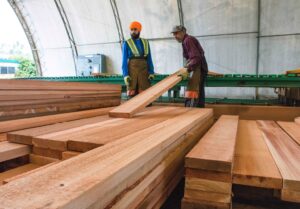 Despite the ongoing decline in construction activity in Russia, domestic demand for lumber increased in July. The volume of apparent lumber consumption in the country rose by 16% in July compared to the same period last year, while construction decreased by 14%. Prices for key lumber categories in July remained at the previous month’s level. …On export markets, Russian exporters faced mixed dynamics. In July, the volume of lumber exports from Russia increased by 18% compared to June, but shipments were 13% lower than a year earlier. China remains a key destination for Russian suppliers, but Russian exporters are facing growing competition from Belarusian companies offering lower prices. The situation for Russian exporters is further complicated by a general decrease in China’s lumber purchases due to the ongoing crisis in its construction sector. Lumber exports from Russia to Japan remain weak: shipment volumes dropped by 19% year-over-year.
Despite the ongoing decline in construction activity in Russia, domestic demand for lumber increased in July. The volume of apparent lumber consumption in the country rose by 16% in July compared to the same period last year, while construction decreased by 14%. Prices for key lumber categories in July remained at the previous month’s level. …On export markets, Russian exporters faced mixed dynamics. In July, the volume of lumber exports from Russia increased by 18% compared to June, but shipments were 13% lower than a year earlier. China remains a key destination for Russian suppliers, but Russian exporters are facing growing competition from Belarusian companies offering lower prices. The situation for Russian exporters is further complicated by a general decrease in China’s lumber purchases due to the ongoing crisis in its construction sector. Lumber exports from Russia to Japan remain weak: shipment volumes dropped by 19% year-over-year.
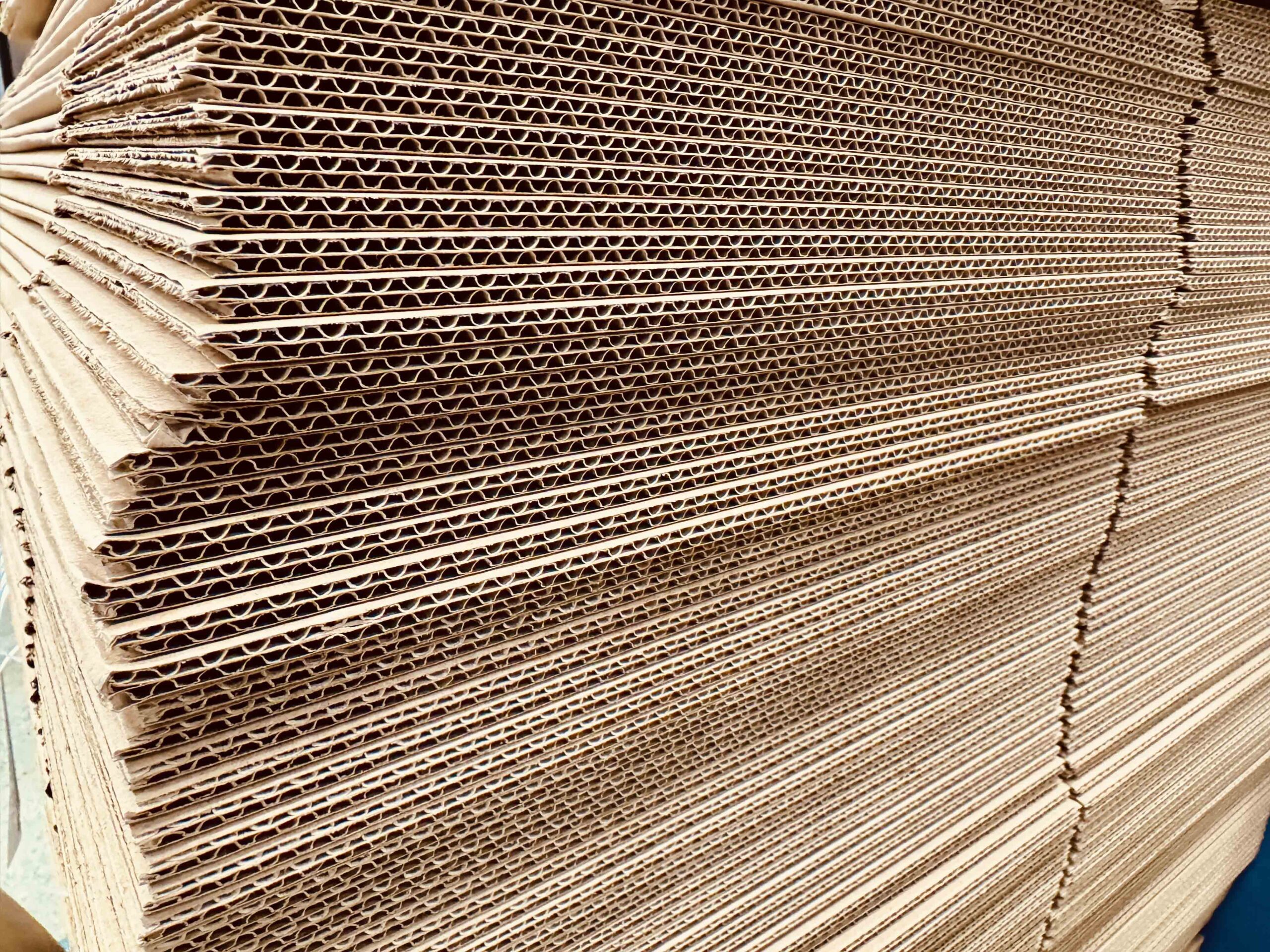 The Danish timber industry is warning of significant financial strain following the introduction of new packaging regulations, which came into effect on 1 January as part of the EU’s packaging directive. According to the Danish Wood Packaging Association (DTE), the rules on extended producer responsibility place the cost burden on manufacturers, even when customers dictate the design and specifications. DTE argues this “uneven” implementation could cost the sector over DKK 60 million annually, with pallet prices expected to rise by around 20%. …The association also criticised the fee structure, claiming it relies on outdated data and fails to differentiate between clean, recyclable wood and mixed wood waste, unnecessarily inflating costs and threatening Danish jobs. DTE is calling for reforms to align payment with design responsibility, adjust fees based on environmental impact, and ensure imported packaging is subject to the same standards.
The Danish timber industry is warning of significant financial strain following the introduction of new packaging regulations, which came into effect on 1 January as part of the EU’s packaging directive. According to the Danish Wood Packaging Association (DTE), the rules on extended producer responsibility place the cost burden on manufacturers, even when customers dictate the design and specifications. DTE argues this “uneven” implementation could cost the sector over DKK 60 million annually, with pallet prices expected to rise by around 20%. …The association also criticised the fee structure, claiming it relies on outdated data and fails to differentiate between clean, recyclable wood and mixed wood waste, unnecessarily inflating costs and threatening Danish jobs. DTE is calling for reforms to align payment with design responsibility, adjust fees based on environmental impact, and ensure imported packaging is subject to the same standards.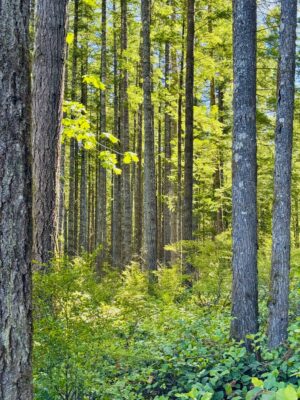 Artificial intelligence (AI), machine learning, remote piloting, and robotics are beginning to have a profound impact on the forest industry as we have known it, from forest management to log harvesting and delivery and right through to lumber production. This is only the beginning. In a recent interview, Bill Gates said that AI will have a more profound impact on humanity than the personal computer (PC) did. …From a forest management perspective, AI offers incredible potential for planning forest cutblocks and reforestation. In the face of climate change, forest companies will have no choice but to design forests that are more resilient to forest fires, pest and pathogens. The ability of AI to provide a variety of solutions in minutes, based on collating and analyzing past research, will make a forest technician’s job easier, while providing better solutions. This is a clear example of using AI for good—and we should make the most of it.
Artificial intelligence (AI), machine learning, remote piloting, and robotics are beginning to have a profound impact on the forest industry as we have known it, from forest management to log harvesting and delivery and right through to lumber production. This is only the beginning. In a recent interview, Bill Gates said that AI will have a more profound impact on humanity than the personal computer (PC) did. …From a forest management perspective, AI offers incredible potential for planning forest cutblocks and reforestation. In the face of climate change, forest companies will have no choice but to design forests that are more resilient to forest fires, pest and pathogens. The ability of AI to provide a variety of solutions in minutes, based on collating and analyzing past research, will make a forest technician’s job easier, while providing better solutions. This is a clear example of using AI for good—and we should make the most of it.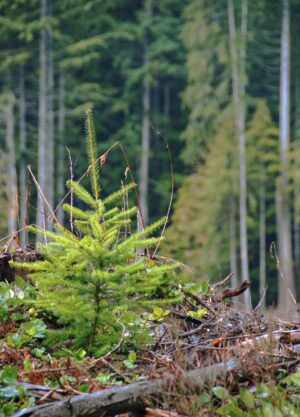 The Government of Canada says it is just over a 10th of the way to its goal of planting two billion trees across the country. Launched in 2021, Canada’s 2 Billion Trees program has reached the milestone of 228 million trees planted, with agreements already in place to plant a total of nearly one billion within the coming years. As of June, 11 provinces and territories, 58 Indigenous partners, 30 municipalities and 88 non-governmental organizations has signed or are negotiating tree-planting agreements. The program aims to protect crucial wildlife habitat, restore areas impacted by wildfires and sequester carbon. …Some of these initiatives include creating at least 10 new national parks and marine conservation areas and 15 new urban parks, as well as designating 30 per cent Canada’s land and water as conservation areas by 2030. The federal government has also committed to reach an emissions reduction target of 40 per cent below 2005 levels by 2030 and net-zero emissions by 2050.
The Government of Canada says it is just over a 10th of the way to its goal of planting two billion trees across the country. Launched in 2021, Canada’s 2 Billion Trees program has reached the milestone of 228 million trees planted, with agreements already in place to plant a total of nearly one billion within the coming years. As of June, 11 provinces and territories, 58 Indigenous partners, 30 municipalities and 88 non-governmental organizations has signed or are negotiating tree-planting agreements. The program aims to protect crucial wildlife habitat, restore areas impacted by wildfires and sequester carbon. …Some of these initiatives include creating at least 10 new national parks and marine conservation areas and 15 new urban parks, as well as designating 30 per cent Canada’s land and water as conservation areas by 2030. The federal government has also committed to reach an emissions reduction target of 40 per cent below 2005 levels by 2030 and net-zero emissions by 2050.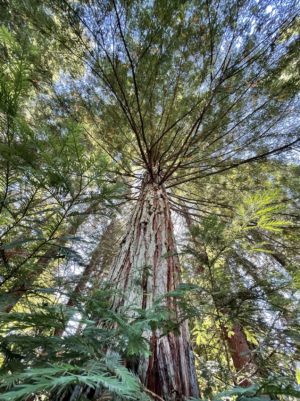 A BC logger is fighting for the return of a $180,000 deposit he paid to the provincial government to access a timber lot that he did not harvest for lack of demand. In 2023, Bill Bosovich struck a deal with BC Timber Sales to log 116 hectares of forest between Osoyoos and Midway. …Bosovich promised to pay the government at least $1.7 million for the wood he would harvest, and put down a cash deposit of $176,700 to cover any contingencies. However, before any logging had occurred and as wood prices fell, Bosovich learned that the four major log buyers in the area were not interested in his wood. …Bosovich let BC Timber Sales know he could not find buyers and was offered a 12-month extension, but only if he committed to paying a further $83,000 deposit. …Bosovich did not want to extend the licence. …BC Timber Sales’ Allan Powelson responded that the government would be keeping his money.
A BC logger is fighting for the return of a $180,000 deposit he paid to the provincial government to access a timber lot that he did not harvest for lack of demand. In 2023, Bill Bosovich struck a deal with BC Timber Sales to log 116 hectares of forest between Osoyoos and Midway. …Bosovich promised to pay the government at least $1.7 million for the wood he would harvest, and put down a cash deposit of $176,700 to cover any contingencies. However, before any logging had occurred and as wood prices fell, Bosovich learned that the four major log buyers in the area were not interested in his wood. …Bosovich let BC Timber Sales know he could not find buyers and was offered a 12-month extension, but only if he committed to paying a further $83,000 deposit. …Bosovich did not want to extend the licence. …BC Timber Sales’ Allan Powelson responded that the government would be keeping his money.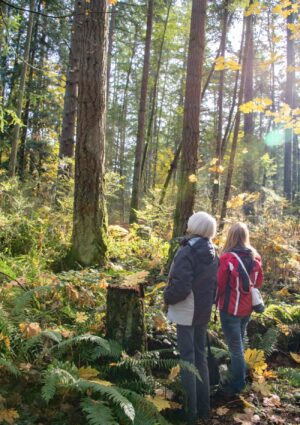 QUESNEL, BC — The Three Rivers Community Forest (TRCF) is showing how local control can bring fresh ideas to forest management, general manager Nick Pickles told Quesnel council this week. The area-based tenure, signed in October 2024, covers more than 38,000 hectares and is jointly owned by the City of Quesnel and the Esdilagh, Lhtako Dene, and Nazko First Nations. It comes with an allowable annual harvest of about 43,000 cubic-metres of conifer and another 10,500 cubic-metres of deciduous timber, Pickles explained at council’s Aug. 26 meeting. …Pickles said the TRCF mandate is more than just cutting trees. “It’s designed to provide long-term access to forest resources for community benefit. It focuses on local decision-making, stewardship, and sustainable forest use.” Profits are reinvested locally, whether it’s jobs, education, or infrastructure, Pickles added.
QUESNEL, BC — The Three Rivers Community Forest (TRCF) is showing how local control can bring fresh ideas to forest management, general manager Nick Pickles told Quesnel council this week. The area-based tenure, signed in October 2024, covers more than 38,000 hectares and is jointly owned by the City of Quesnel and the Esdilagh, Lhtako Dene, and Nazko First Nations. It comes with an allowable annual harvest of about 43,000 cubic-metres of conifer and another 10,500 cubic-metres of deciduous timber, Pickles explained at council’s Aug. 26 meeting. …Pickles said the TRCF mandate is more than just cutting trees. “It’s designed to provide long-term access to forest resources for community benefit. It focuses on local decision-making, stewardship, and sustainable forest use.” Profits are reinvested locally, whether it’s jobs, education, or infrastructure, Pickles added.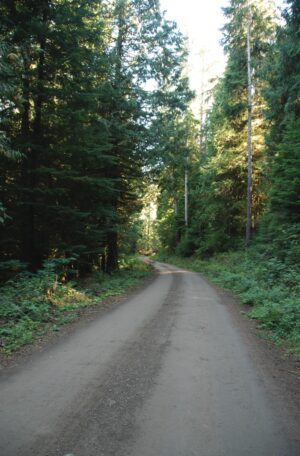 Under the 2001 Roadless Rule enacted by President Bill Clinton, millions of acres of roadless areas on national forests across the country are conserved, protecting vital habitats and watersheds. A “blank spot on a map,” in the words of the naturalist Aldo Leopold, is increasingly valuable in our urbanizing society. …The current administration is right to look for ways to address the growing wildfire threat in these areas. But instead of doing away with the Roadless Rule, the White House should look to a simple way to make our forests more resilient to wildfire without compromising the other benefits. …One way to allow forest thinning and prescribed burns to reduce the wildfire threat is to amend the roadless rule… to permit temporary roads in roadless areas that are near neighborhoods along the wildland-urban interface to allow for forest thinning or other ecological restoration. [to access the full story a NY Times subscription is required]
Under the 2001 Roadless Rule enacted by President Bill Clinton, millions of acres of roadless areas on national forests across the country are conserved, protecting vital habitats and watersheds. A “blank spot on a map,” in the words of the naturalist Aldo Leopold, is increasingly valuable in our urbanizing society. …The current administration is right to look for ways to address the growing wildfire threat in these areas. But instead of doing away with the Roadless Rule, the White House should look to a simple way to make our forests more resilient to wildfire without compromising the other benefits. …One way to allow forest thinning and prescribed burns to reduce the wildfire threat is to amend the roadless rule… to permit temporary roads in roadless areas that are near neighborhoods along the wildland-urban interface to allow for forest thinning or other ecological restoration. [to access the full story a NY Times subscription is required]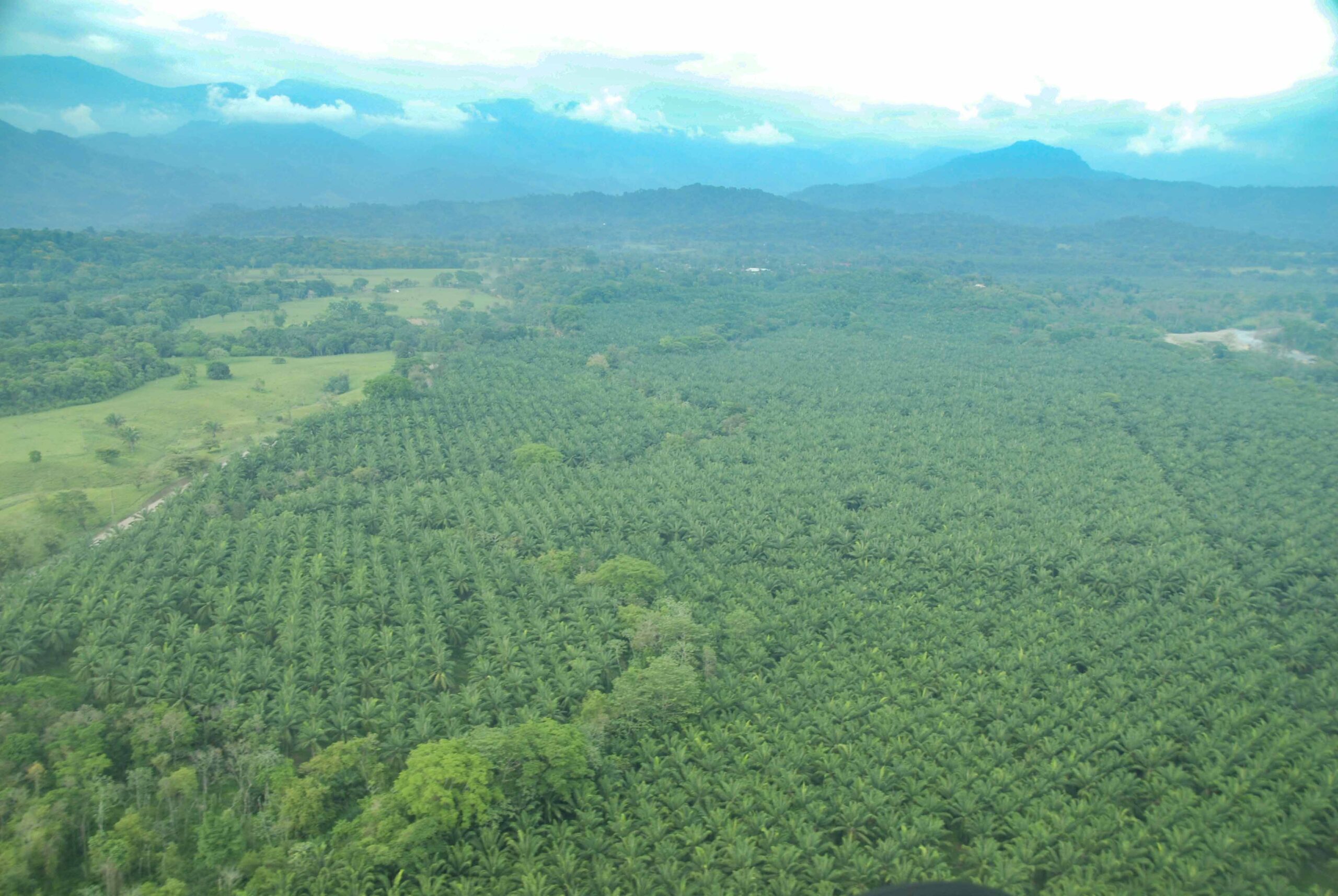
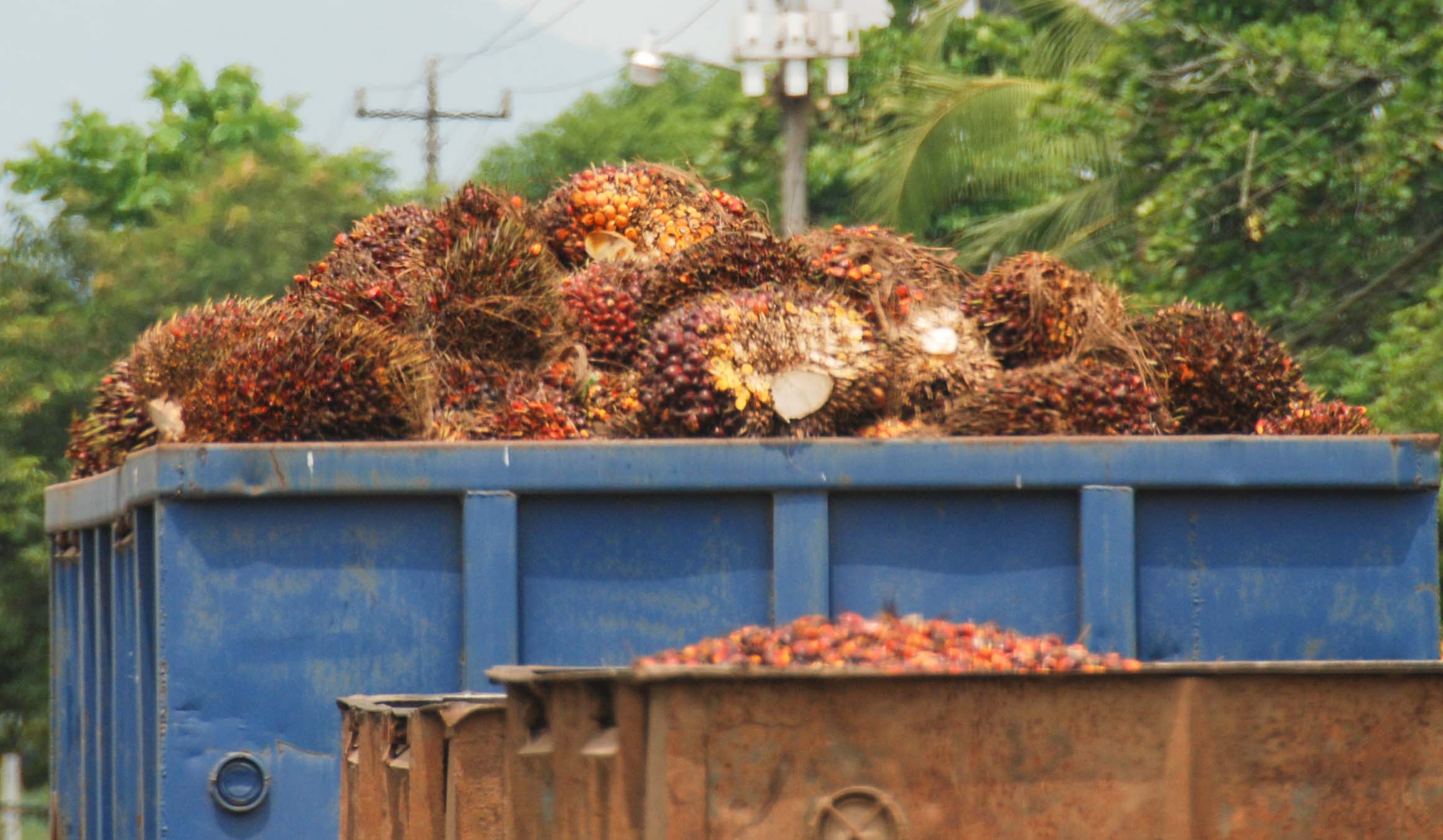 Industry concerns have been raised over a freshly-struck agreement between the EU and the US over future trading arrangements, which observers have asserted could lead to America being offered exceptions from complying with EUDR environmental laws, reports Neill Barston. As the Palm Oil Monitor non-governmental organisation noted, if America is to be permitted exemptions from data monitoring underpinning the entire basis of the much-anticipated deforestation laws following intense lobbying from its paper industry, then other trading partners including Malaysia and Indonesia – which have core interests in the supply of palm oils for the confectionery and snacks sector, should be allowed similar treatment. …Moreover, as the palm oil industry organisation stated, unveiling the broader US-EU Trade Framework Agreement presents an immediate major hurdle for the EU Commission. In seemingly offering preferential treatment for America, this could, in its view, lead to challenges from the World Trade Organisation over equal trading between nationalities.
Industry concerns have been raised over a freshly-struck agreement between the EU and the US over future trading arrangements, which observers have asserted could lead to America being offered exceptions from complying with EUDR environmental laws, reports Neill Barston. As the Palm Oil Monitor non-governmental organisation noted, if America is to be permitted exemptions from data monitoring underpinning the entire basis of the much-anticipated deforestation laws following intense lobbying from its paper industry, then other trading partners including Malaysia and Indonesia – which have core interests in the supply of palm oils for the confectionery and snacks sector, should be allowed similar treatment. …Moreover, as the palm oil industry organisation stated, unveiling the broader US-EU Trade Framework Agreement presents an immediate major hurdle for the EU Commission. In seemingly offering preferential treatment for America, this could, in its view, lead to challenges from the World Trade Organisation over equal trading between nationalities.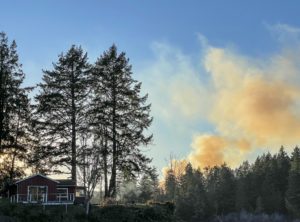 A year after Oregon endures its most destructive fire season on record in 2020, state lawmakers order a map estimating the wildfire risk for every property in the state. It’s the kind of rating now available on real estate sites like Zillow. The state wants to use the results to decide where it will apply forthcoming codes for fire-resistant construction and protections around homes. Around the same time, insurance companies start dropping Oregon homeowners’ policies and raising premiums to limit future losses, much as they have done in other disaster-prone states. Insurers have their own sophisticated risk maps to guide them, but some brokers instead tell homeowners the blame lies with the map. The belief gets treated as fact both on social media and in mainstream news — even though insurers and regulators say it’s not true. …By the time the state pulls back the map, the myths about it have gained so much momentum there’s no stopping them.
A year after Oregon endures its most destructive fire season on record in 2020, state lawmakers order a map estimating the wildfire risk for every property in the state. It’s the kind of rating now available on real estate sites like Zillow. The state wants to use the results to decide where it will apply forthcoming codes for fire-resistant construction and protections around homes. Around the same time, insurance companies start dropping Oregon homeowners’ policies and raising premiums to limit future losses, much as they have done in other disaster-prone states. Insurers have their own sophisticated risk maps to guide them, but some brokers instead tell homeowners the blame lies with the map. The belief gets treated as fact both on social media and in mainstream news — even though insurers and regulators say it’s not true. …By the time the state pulls back the map, the myths about it have gained so much momentum there’s no stopping them. 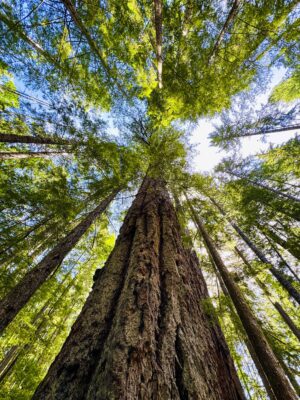 An executive order by Washington Commissioner of Public Lands Dave Upthegrove has put 77,000 acres of older forests off-limits to logging. …Some local activists call these old-but-not-quite-old-growth stands “legacy forests,” and have resorted to protests, including tree sits and road blockades, to stop them from being sawed down. Upthegrove’s order would also allow logging to go forward on 29,000 acres of those almost-old-growth forests. Some environmental groups praised the move, while others say it greenlights too much logging of the best remaining older forests. …Forest activists still hope to save some of areas slated to be logged over the next five years. …State officials say that timber harvest levels — and the revenue that goes to schools and counties — would be largely unaffected by the executive order. …The Department of Natural Resources has 346,000 acres of structurally complex forests on the 2.4 million acres of forestland it manages.
An executive order by Washington Commissioner of Public Lands Dave Upthegrove has put 77,000 acres of older forests off-limits to logging. …Some local activists call these old-but-not-quite-old-growth stands “legacy forests,” and have resorted to protests, including tree sits and road blockades, to stop them from being sawed down. Upthegrove’s order would also allow logging to go forward on 29,000 acres of those almost-old-growth forests. Some environmental groups praised the move, while others say it greenlights too much logging of the best remaining older forests. …Forest activists still hope to save some of areas slated to be logged over the next five years. …State officials say that timber harvest levels — and the revenue that goes to schools and counties — would be largely unaffected by the executive order. …The Department of Natural Resources has 346,000 acres of structurally complex forests on the 2.4 million acres of forestland it manages.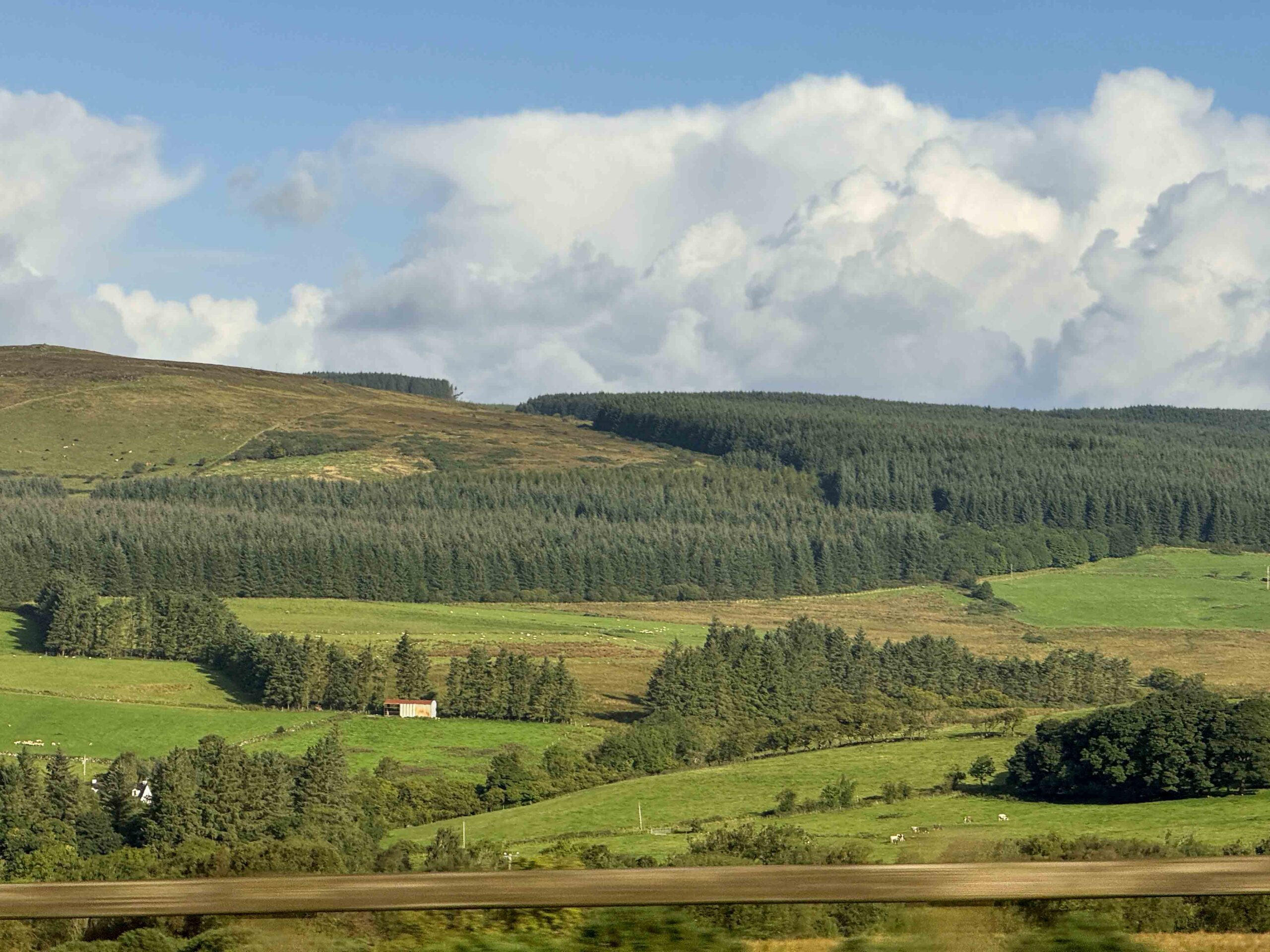 IRELAND — The next forestry programme must “ensure that forestry as a land use option is economically viable and competitive, while satisfying environmental requirements”, according to the Irish Farmers’ Association (IFA). IFA president Francie Gorman has said that forestry is a “strategically important sector that has a key role to play in achieving climate change targets”. …Ireland’s largest forestry and timber body, Forest Industries Ireland (FII) has highlighted the “huge opportunity” for farmers “to take advantage of afforestation grant schemes” during a meeting with the IFA this week. FII highlighted the need for more farmers to consider planting forestry on their land amid rapid growth in global demand for timber products, driving up the value of future forestry harvests. “The Irish timber industry has the potential to significantly grow as many countries move towards net zero carbon targets and focus on sustainable building materials such as timber.”
IRELAND — The next forestry programme must “ensure that forestry as a land use option is economically viable and competitive, while satisfying environmental requirements”, according to the Irish Farmers’ Association (IFA). IFA president Francie Gorman has said that forestry is a “strategically important sector that has a key role to play in achieving climate change targets”. …Ireland’s largest forestry and timber body, Forest Industries Ireland (FII) has highlighted the “huge opportunity” for farmers “to take advantage of afforestation grant schemes” during a meeting with the IFA this week. FII highlighted the need for more farmers to consider planting forestry on their land amid rapid growth in global demand for timber products, driving up the value of future forestry harvests. “The Irish timber industry has the potential to significantly grow as many countries move towards net zero carbon targets and focus on sustainable building materials such as timber.”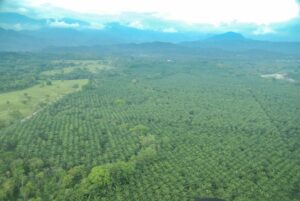 The Amazon rainforest is one of Earth’s most diverse ecosystems, playing a key role in maintaining regional and global climate stability. However, recent changes in land use, vegetation, and the climate have disrupted biosphere-atmosphere interactions, leading to significant alterations in the water, energy, and carbon cycles. …Here, we quantify the relative contributions of deforestation and global climate change to observed shifts in key Amazonian climate parameters. We analyzed long-term atmospheric and land cover change data across 29 areas in the Brazilian Legal Amazon from 1985 to 2020. …While the rise in atmospheric methane (CH4) and carbon dioxide (CO2) mixing ratios is primarily driven by global emissions, deforestation has significantly increased surface air temperatures and reduced precipitation during the Amazonian dry season. Over the past 35 years, deforestation has accounted for approximately 74% of the ~ 21 mm dry season decline and 16.5% of the 2°C rise in maximum surface air temperature.
The Amazon rainforest is one of Earth’s most diverse ecosystems, playing a key role in maintaining regional and global climate stability. However, recent changes in land use, vegetation, and the climate have disrupted biosphere-atmosphere interactions, leading to significant alterations in the water, energy, and carbon cycles. …Here, we quantify the relative contributions of deforestation and global climate change to observed shifts in key Amazonian climate parameters. We analyzed long-term atmospheric and land cover change data across 29 areas in the Brazilian Legal Amazon from 1985 to 2020. …While the rise in atmospheric methane (CH4) and carbon dioxide (CO2) mixing ratios is primarily driven by global emissions, deforestation has significantly increased surface air temperatures and reduced precipitation during the Amazonian dry season. Over the past 35 years, deforestation has accounted for approximately 74% of the ~ 21 mm dry season decline and 16.5% of the 2°C rise in maximum surface air temperature. 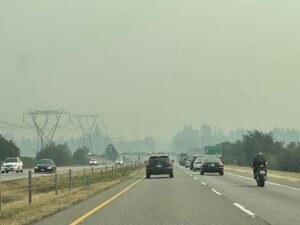 The federal government is attempting to abandon years of climate science and regulation, and officials from Washington state are warning those efforts will drastically slow the country’s ability to cut greenhouse gas emissions. The U.S. Environmental Protection Agency no longer wants to classify greenhouse gas emissions as dangerous and, therefore, something that must be regulated. The agency is now in the middle of a public comment process to reverse its long-standing course. Public officials and climate change experts from across the country are testifying against the federal government’s new direction. Among those in opposition is Joel Creswell, who manages the climate pollution reduction program with Washington state’s Department of Ecology. He said the EPA’s process is built on unscientific research and cherry-picked data. It’s also likely illegal, Creswell said. The federal government is trying to provide the “appearance of a science-based reason” not to regulate greenhouse gases, Creswell said.
The federal government is attempting to abandon years of climate science and regulation, and officials from Washington state are warning those efforts will drastically slow the country’s ability to cut greenhouse gas emissions. The U.S. Environmental Protection Agency no longer wants to classify greenhouse gas emissions as dangerous and, therefore, something that must be regulated. The agency is now in the middle of a public comment process to reverse its long-standing course. Public officials and climate change experts from across the country are testifying against the federal government’s new direction. Among those in opposition is Joel Creswell, who manages the climate pollution reduction program with Washington state’s Department of Ecology. He said the EPA’s process is built on unscientific research and cherry-picked data. It’s also likely illegal, Creswell said. The federal government is trying to provide the “appearance of a science-based reason” not to regulate greenhouse gases, Creswell said.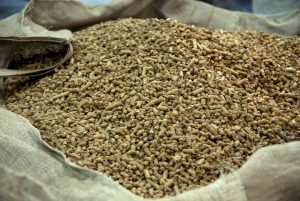 Investors in Drax have a problem. Shares in the company that produces 10% of the UK’s renewable power plunged last week after the Financial Conduct Authority launched a probe into its financial reports. The investigation centres on whether the company had misrepresented the origin of the biomass pellets it burns to create electricity. …But even assuming Drax does what it says it does, it has a second problem. Its business model, reliant on burning imported sustainable biomass to generate power, is inherently controversial. Net zero supporters don’t think Drax is sustainable enough, fearing that forestry companies might classify more wood as rubbish if selling waste pellets became lucrative. …Drax may not be easy to like, but it does make up an important part of the UK energy system. …So far, politicians have walked a line, extending support but cutting its size.
Investors in Drax have a problem. Shares in the company that produces 10% of the UK’s renewable power plunged last week after the Financial Conduct Authority launched a probe into its financial reports. The investigation centres on whether the company had misrepresented the origin of the biomass pellets it burns to create electricity. …But even assuming Drax does what it says it does, it has a second problem. Its business model, reliant on burning imported sustainable biomass to generate power, is inherently controversial. Net zero supporters don’t think Drax is sustainable enough, fearing that forestry companies might classify more wood as rubbish if selling waste pellets became lucrative. …Drax may not be easy to like, but it does make up an important part of the UK energy system. …So far, politicians have walked a line, extending support but cutting its size.  Energy company Drax is under investigation by the UK’s financial watchdog over the firm’s sourcing of wood for biomass pellets in the wake of whistleblower claims. The London-listed group said the Financial Conduct Authority (FCA) probe covers more than two years, from January 2022 to March 2024, and will also look at compliance of Drax’s annual reports from 2021, 2022 and 2023 with rules over listing, disclosure and transparency. Drax said it will “co-operate with the FCA as part of their investigation”. Shares in the FTSE 250 firm fell 8% in morning trading on Thursday. It follows accusations by Drax’s former head of public affairs and policy, Rowaa Ahmar, in March that the company had misled over its sourcing of wood for biomass pellets, which were made as part of her claim for unfair dismissal at an employment tribunal. Drax denied her claims. The firm and Ms Ahmar reached a settlement with Drax just over a week after the case opened.
Energy company Drax is under investigation by the UK’s financial watchdog over the firm’s sourcing of wood for biomass pellets in the wake of whistleblower claims. The London-listed group said the Financial Conduct Authority (FCA) probe covers more than two years, from January 2022 to March 2024, and will also look at compliance of Drax’s annual reports from 2021, 2022 and 2023 with rules over listing, disclosure and transparency. Drax said it will “co-operate with the FCA as part of their investigation”. Shares in the FTSE 250 firm fell 8% in morning trading on Thursday. It follows accusations by Drax’s former head of public affairs and policy, Rowaa Ahmar, in March that the company had misled over its sourcing of wood for biomass pellets, which were made as part of her claim for unfair dismissal at an employment tribunal. Drax denied her claims. The firm and Ms Ahmar reached a settlement with Drax just over a week after the case opened. There are fewer injuries and deaths occurring on B.C. construction sites compared to previous years and decades, although much work remains to ensure worker safety. “Struck by’s,” “falls from” and “trips and slips” are among the most common incidents on job sites, and major events like Kelowna’s deadly crane collapse in 2021 highlight the risks that accompany modern construction. Work-related death claims in the construction sector totalled 31 in 2020, 29 in 2021, 54 in 2022, 39 in 2023 and 25 in 2024, according to data provided by WorkSafeBC. …Dave Baspaly, president of the Council of Construction Associations (COCA), which represents all major construction associations in BC said… the industry’s improved safety record is a result of more training, stricter enforcement of WorkSafeBC rules, and a culture of compliance where non-adherence is not tolerated. He emphasizes that proactive measures, like rigorous inspections and coordinated site management, are making construction sites safer.
There are fewer injuries and deaths occurring on B.C. construction sites compared to previous years and decades, although much work remains to ensure worker safety. “Struck by’s,” “falls from” and “trips and slips” are among the most common incidents on job sites, and major events like Kelowna’s deadly crane collapse in 2021 highlight the risks that accompany modern construction. Work-related death claims in the construction sector totalled 31 in 2020, 29 in 2021, 54 in 2022, 39 in 2023 and 25 in 2024, according to data provided by WorkSafeBC. …Dave Baspaly, president of the Council of Construction Associations (COCA), which represents all major construction associations in BC said… the industry’s improved safety record is a result of more training, stricter enforcement of WorkSafeBC rules, and a culture of compliance where non-adherence is not tolerated. He emphasizes that proactive measures, like rigorous inspections and coordinated site management, are making construction sites safer. Border Patrol agents arrested two firefighters Wednesday – who they say were in the United States illegally – while they were working to contain Washington state’s biggest wildfire. …The Bear Gulch Fire on the peninsula has already torched almost 9,000 acres in the Olympic National Forest. …The human-caused wildfire on Washington’s Olympic Peninsula has been burning since July 6 and was just 13% contained as of Thursday. …Washington Gov. Bob Ferguson said he is “deeply concerned” about the arrests. Washington Sen. Patty Murray said, “Trump has undercut our wildland firefighting abilities in more ways than one—from decimating the Forest Service and pushing out thousands of critical support staff, to now apparently detaining firefighters on the job.” Under the Biden administration, the Department of Homeland Security said it would not conduct immigration enforcement “at locations where disaster and emergency response and relief is being provided” such as evacuation routes or areas where emergency supplies are being distributed.
Border Patrol agents arrested two firefighters Wednesday – who they say were in the United States illegally – while they were working to contain Washington state’s biggest wildfire. …The Bear Gulch Fire on the peninsula has already torched almost 9,000 acres in the Olympic National Forest. …The human-caused wildfire on Washington’s Olympic Peninsula has been burning since July 6 and was just 13% contained as of Thursday. …Washington Gov. Bob Ferguson said he is “deeply concerned” about the arrests. Washington Sen. Patty Murray said, “Trump has undercut our wildland firefighting abilities in more ways than one—from decimating the Forest Service and pushing out thousands of critical support staff, to now apparently detaining firefighters on the job.” Under the Biden administration, the Department of Homeland Security said it would not conduct immigration enforcement “at locations where disaster and emergency response and relief is being provided” such as evacuation routes or areas where emergency supplies are being distributed.
